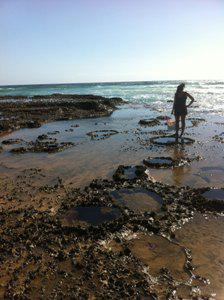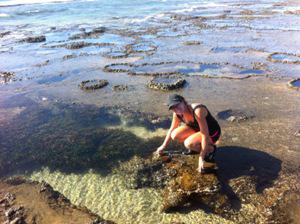Kaylee Smit
Other projects
3 Jan 2024
Piloting a Citizen Science Approach for Reef Monitoring to Improve Conservation of Coral Reefs in South Africa
The aim is to investigate the growth dynamics and physiological functioning of two intertidal coral species along the east coast of South Africa, in order to understand their ability to cope in marginal habitats.
Corals are under a lot of pressure with the increase of sea surface temperatures in response to global climate change (Hoegh-Guldberg, 1999; Anthony & Connolly, 2004; Berkelmans & van Oppen, 2006), evident with the mass occurrence of coral bleaching around the world (Glynn, 1996). Corals along the east coast of KZN, South Africa include those that occur at the southernmost range of their natural global distributions. They are therefore living in marginal habitats, and are able to withstand conditions that should not be tolerable to corals.

Understanding the link between physiological processes and environmental conditions is important to determine the ecological ability of corals to tolerate these marginal conditions (Anthony & Connolly 2004). It is for this reason that this project proposes to investigate the physiological and physical processes that aid in the growth and survival of these corals living at high latitudes under marginal conditions. This study will consist of the following components:

1. Comparing physiological adaptations of two coral species, Pocillopora verrucosa and Anomastrea irregularis, along a latitudinal gradient on the east coast of South Africa - This will include differences between the south, mid and north coast; comparing tissue physiology (zooxanthellae density, chlorophyll content and lipid concentrations) between species and between seasons.
2. Investigating the population dynamics of these corals, latitudinally and between species. This will consist of measuring the population size dynamics of each species in order to determine underlying processes that affect these corals, and the response of the coral populations.
3. Determining the influence of heterotrophic feeding by the corals as a mechanism for coping with these marginal conditions. This will be done through isotope analysis of coral tissue and potential diet sources. C13 and N15 will be used to measure the contribution of autotrophy and heterotrophy in the coral metabolism. Comparisons will be done between species and between summer and winter. This will be done at all sites along the coast.
4. Additionally, we will aim to measure real-time temperatures in these intertidal rock pools, allowing us to see what temperature fluctuations and extremes these corals undergo in these habitats.